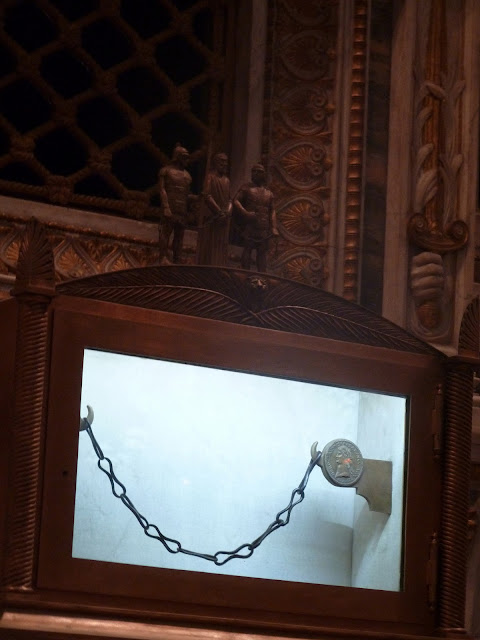From the air, we were conscious of the incredible difference between the countryside of Italy and that of the Holy Land. The rolling green hills and ordered fields were in great contrast to the barren countryside we had left behind.
We arrived in Rome around 9.30am to continue our journey on the path of St Peter and headed straight to the...
The Catacombs of San Callisto are almost 2000 years old and are the most sacred of all the catacombs. The original catacombs are believed to have been a private Christian underground burial place. The reason for the underground burial places was because Christians, before Emperor Constantine I, often were persecuted for their religious beliefs.
The underground cemetery was expanded during the end of the second century by a man who later became Pope - Callixtus, after whom the catacombs are named - to not only include more tombs, but also chapels and meeting areas.
The catacombs became the official burial site for Rome’s Christians and more than 50 martyrs and 16 popes have been buried here, making it one of the most important Christian cemeteries. It is built over four levels with around 20 kilometres of tunnels and houses 500,000 bodies.
In the eighth century the barbarians destroyed much of the catacombs, including the name plates on the burial sites. Saint Cecilia, the patron of music, was buried here until 1599 when her body was moved to a basilica in Trastevere. It is said that her body, after more than 1000 years was not corrupted by time. Inside the catacombs can be seen Christian symbols of the shepherd, fish and Chi Rho - the oldest Christian symbols.
Link to Early Christian symbols
Castel Sant' Angelo
was built in the second century as a tomb for Emperor Hadrian and his family. At the end of the third century it was changed into a fortress. It has also been a prison and a papal residence (from the time of Pope Paul lll). It was used by former Popes in times of danger.
The bridge of Sant Angelo connected the mausoleum with the centre of Rome.
The Tiber River
The bridge of Sant' Angelo
The Path of Peter exhibition
The Treasury Room, which contained the riches of the Popes.
Saint Michael is the guardian Archangel for the Church. Read about the procession in Rome that ended the plague and its link to the statue of Saint Michael.
The covered passageway which still connects Castel Sant'Angelo to the Vatican.
Basilica of Saint Paul Outside the Walls
This is the largest church in the city after St Peter's Basilica. The basilica was founded by the Roman Emperor of Constantine 1 over the burial site of St Paul. It has had a number of additions over the centuries. In 1823 it was almost completely destroyed by fire.
Saint Peter and Saint Paul are considered the cofounders of the Church in Rome.
We were overwhelmed by the magnificence of this sacred site and the proximity to the recent discovery of the burial site of this amazing disciple of Jesus. His life story is a testament to the power of God, a God who never gives up on any one of us!
The Byzantine door constructed in the 11th Century
The Holy Door
The exterior of the Basilica of St Paul Outside the Walls
Mosaic portraits of every pope in the history of the Catholic Church line the upper walls of the basilica.
The apse mosaic - Christ with Peter, Paul, Andrew and Luke
The chapel of the Blessed Sacrament, at the left of the central main altar, where we celebrated Mass. Next to it is the Chapel of Saint Stephen, a martyr persecuted by Saul before his conversion. After his conversion, Stephen was a reminder of his aggressive past and a symbol of the triumph of grace.
A primitive statue of St. Paul who with Peter was a co-founder of the Church in Rome.
Statue of a young St Stephen in the chapel of St Stephen
Saint Paul was under house arrest in Rome between 62 and 63AD before he headed to Spain. He was arrested in northern Greece, brought back to Rome and beheaded by Nero most probably in 67 AD. A sword was used to behead him because, as he was a Roman citizen, he was entitled to a quick death.
Discovery of Saint Paul's sarcophagus
Behind the grille, you can see at the end, the side of the sarcophagus of unpolished marble.
The chains believed to have held St Paul.
The canopy
Original frescoes around the basilica not destroyed by the fire.
Remnants of columns of the original basilica




































No comments:
Post a Comment